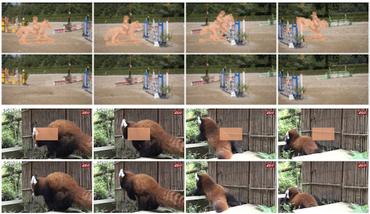Deep Blind Video Decaptioning by Temporal Aggregation and Recurrence
Blind video decaptioning is a problem of automatically removing text overlays and inpainting the occluded parts in videos without any input masks. While recent deep learning based inpainting methods deal with a single image and mostly assume that the positions of the corrupted pixels are known, we aim at automatic text removal in video sequences without mask information. In this paper, we propose a simple yet effective framework for fast blind video decaptioning. We construct an encoder-decoder model, where the encoder takes multiple source frames that can provide visible pixels revealed from the scene dynamics. These hints are aggregated and fed into the decoder. We apply a residual connection from the input frame to the decoder output to enforce our network to focus on the corrupted regions only. Our proposed model was ranked in the first place in the ECCV Chalearn 2018 LAP Inpainting Competition Track2: Video decaptioning. In addition, we further improve this strong model by applying a recurrent feedback. The recurrent feedback not only enforces temporal coherence but also provides strong clues on where the corrupted pixels are. Both qualitative and quantitative experiments demonstrate that our full model produces accurate and temporally consistent video results in real time (50+ fps).
PDF Abstract CVPR 2019 PDF CVPR 2019 Abstract



